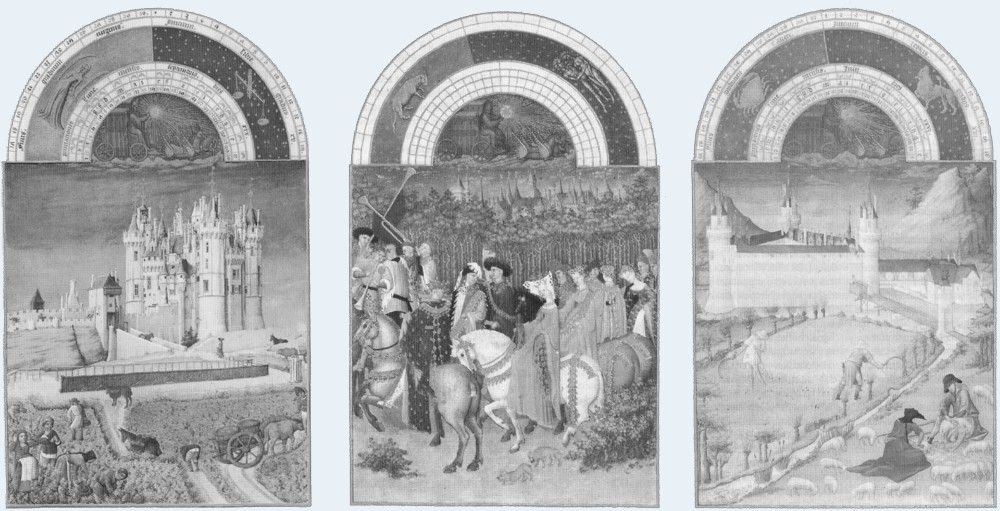Zodiac / Capilla Flamenca
Ars Nova and Ars Subtilior in the Low Countries and Europe

medieval.org
capilla.be
Eufoda 1360
2004
Ram | aries | bélier • Maart | March | mars
Guillaume de MACHAUT (ca. 1300-1377)
1. Riches d'amour et mendians d'amie [5:47]
Mathieu de GANT (fl. 1250)
2. De faire chançon envoisie [3:10]
Stier | taurus | taureau • April | avril
Johannes CICONIA (ca. 1370/1375-1412)
3. Sus un' fontayne en remirant [7:02]
Tweelingen | gemini | gémeaux • Mei | May | mai
Thomas FABRI (fl. 1400-1415)
4. Die mey so lieflic wol ghebloit [1:28]
anoniem
5. Tsinghen van de nachtegaele [2:02]
Kreeft | cancer • Juni | June | juin
anoniem
6. Or sus vous dormés trop, madame joliete [3:55]
Mathieu de GANT
7. Mahiu, jugiez [1:31]
Leeuw | leo | lion • Juli | July | juillet
SOLAGE (fl. 1480-1490)
8. Joieux de cuer en seumellant estoye [2:36]
anoniem
9. Isabella [2:30]
Maagd | virgo | vierge • Augustus | August | août
anoniem
10. Je, Fortune, fay a toulx assavoir [1:12]
Mathieu de GANT
11. Je serf Amors a mon pooir [1:31]
Weegschaal | libra | balance • September | septembre
SOLAGE
12. Calextone, qui fut dame terrouse [3:38]
Johannes Simon de HASPRE (HASPROIS, fl. 1378-1428)
13. Puisque je suis fumeux, plains de fumee [4:34]
Schorpioen | scorpio | scorpion • Oktober | October | octobre
Thomas FABRI
14. Ach, Vlaendre vrie [2:49]
Adam de la HALLE (1240/1250-1288?)
15. Adan, d'amour vous demant [1:54]
Boogschutter | sagittarius | sagittaire • November | novembre
SOLAGE
16. Le basile de sa propre nature [3:23]
Guillaume de MACHAUT
17. Quant je sui mis au retour [1:27]
Steenbok | capricorn | capricorne • December | décembre
Baude CORDIER (fl. 1400-1410)
18. Tous par compas suy composés [2:21]
Waterman | aquarius | verseau • Januari | January | janvier
anoniem
19. Esperance, ki en mon cuer s'embath [4:39]
Vissen | pisces | poissons • Februari | February | février
anoniem
20. Je languis d'amere mort [3:39]
Pierre des MOLINS (fl. 1350)
21. De ce que foul pensé souvent remaynt [2:29]

CAPILLA FLAMENCA
Dirk Snellings
Marnix de Cat, contratenor, slagwerk
Jan Caals, tenor
Lieven Termont, bariton
Dirk Snellings, bas
Liam Fennelly, vedel
Jowan Merckx, fluiten, doedelzak
Jan van Outryve, luit
Digitale opname en montage: Jo Cops Productions
Kapel van het Iers College, Leuven, II.2004
Artistieke leiding: Dirk Snellings
Musicologisch advies en toelichting: Bruno Bouckaert
Grafische vormgeving: Daniël Peetermans
Coverillustratie: Sagittarius
Oxford, Bodleian Library, Auct D info 2.11, fol. 11r
© The Art Archive | Bodleian Library Oxford
(foto: Paul Maeyaert)
Pag. 2, 5 en 15: ©: RMN/R.G. Ojeda
Met de steun van de Vlaamse Gemeenschap
de bijLoke
© 2004 Davidsfonds/Eufoda, Leuven
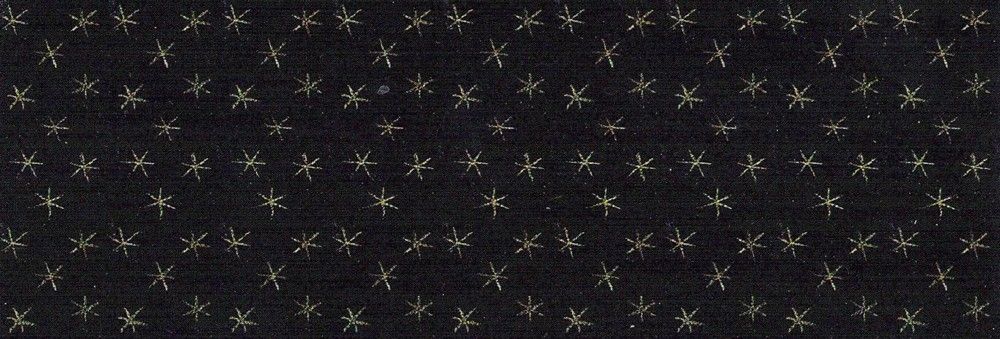
English liner notes
Van Foi tot Zodiac
In opdracht van de Stedelijke Concertzaal de Bijloke in Gent koos de Capilla Flamenca enkele Gentse Ars nova-muziekfragmenten als vertrekpunt van de voorstelling Foi. In samenwerking met het Gentse dansgezelschap Les Ballets C. de la B. ging Foi
in de regie van Sidi Larbi Cherkaoui in maart 2003 in première. Vroege
polyfonie en moderne dans versmolten tot een tijdsoverschrijdende en
pakkende voorstelling die gedurende één jaar heel de wereld bereisde.
De werken op deze cd zijn geordend naar het model van Les Très Riches Heures du Duc de Berry,
het bekendste middeleeuwse getijdenboek. De relatie tussen het
alledaagse leven en de kosmos wordt in de wereldberoemde
kalenderminiaturen, gerealiseerd door de gebroeders Van Limburg tussen
1412 en 1416, bijzonder treffend en gedetailleerd geïllustreerd. Ze
getuigen ook van de dwingende impact van de seizoenen op het dagelijkse
leven en op de psyche van de middeleeuwse mens. De activiteiten van de
maand binnen het wisselend verloop van de vier seizoenen worden
verbonden met de astrologische tekens van de dierenriem (zodiak). Net
als in de prechristelijke traditie waar het zodiakjaar begint met de
lente, opent onze cd met dit veelbelovende seizoen.
Een rijke
waaier aan stemmingen met de seizoenen (lente, zomer, herfst en winter)
als decor weerklinkt in de veertiende-eeuwse liederen als een tijdloze
spanningsboog van diepmenselijke gevoelens tussen het verleden en het
heden.
Dirk Snellings
Artistiek directeur, Capilla Flamenca
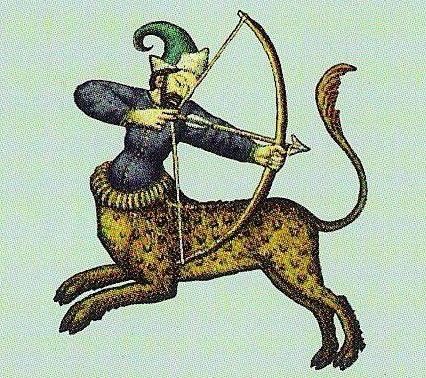
Ars Nova en Ars Subtilior
in de Lage Landen en Europe
BRUNO BOUCKAERT
‘Or sont vivant biaus dis faisant
Qui ne s'en vont mie taisant
C'est de Machau le boin Willame
Si fait redolent, si que bausme
Philippes de Vitri et ses freres
Font choses bielles et moult clercs
Et la mettent leur estudie...’
Toen de Doornikse kroniekschrijver, dichter en abt Gilles li Muisis de bovenstaande verzen in 1350 in zijn Méditations
optekende, was het al duidelijk wie de twee meest gerenommeerde
componisten van zijn tijd waren. Philippe de Vitry (1291-1361) en
Guillaume de Machaut (ca. 1300-1377) worden tot op vandaag beschouwd als
de belangrijkste pioniers van de Franse Ars nova. Het werk van
de Machaut en zijn tijdgenoot-componisten heeft het veertiende-eeuwse
muziek-leven in de Lage Landen dan ook in sterke mate beïnvloed. Hun
muziek werd vanuit de eersterangscentra van de Ars nova-kunst als
Parijs en Avignon geïmporteerd. Dat hoeft niet te verwonderen,
aangezien de algemene politieke en culturele ambities van de Lage Landen
in die periode vooral op Parijs waren gericht. Maar in de afgelopen
decennia zijn steeds meer nieuwe elementen opgedoken die aantonen dat er
zeker geen sprake was van een louter eenrichtingsverkeer. Talrijke
musici uit de Nederlanden studeerden aan de Parijse universiteit en
bevolkten de Parijse hofkapel en de kapellen van de hertogen van Anjou,
Berry en Bourgondië. Muziekfragmenten bewaard in onder meer Bergen,
Brussel, Doornik, Gent, Kamerijk, Leiden, Luik, Tongeren en Utrecht
getuigen van een zeer intensieve muziekpraktijk aan de hoven, in steden,
kathedralen en kapittelkerken in de Lage Landen geruime tijd vóór
Guillaume Dufay (1397?-1474) en Gilles Binchois (ca. 1400-1460) op het
toneel verschenen. Deze muziekhandschriften bevatten niet alleen een
omvangrijk, maar ook een bijzonder rijk en gevarieerd Ars
nova-repertoire van zowel geestelijke als wereldlijke composities op
Latijnse en Franse teksten. Talrijke werken zijn in de Lage Landen zelf
ontstaan en geraakten van daaruit over Europa verspreid. Bovendien is
een vrij groot aantal liederen op Nederlandse teksten overgeleverd. Dit
alles wijst op een zeer specifieke en eigen bijdrage van musici en
componisten afkomstig uit de Lage Landen tot de heersende Europese
muziekstromingen van die tijd.
De ‘Gentse Ars nova-fragmenten’
krijgen in deze cd-opname een belangrijke plaats toebedeeld. Het
betreft twee muziekhandschriften die bewaard worden in het Gentse
Rijksarchief en afkomstig zijn uit de archieven van de abdij van de
cisterciënzerzusters van Ter Haeghen (Gent, Rijksarchief, Varia D 3360
A) en van de abdij van Groenenbriel (Gent, Rijksarchief, Fonds
Groenenbriel, Nr. 133). Het bifolio uit de abdij van Groenenbriel is een
verzameling van misdelen en later toegevoegde chansons. De twee
fragmenten uit de abdij van Ter Haeghen zijn restanten van een
chansonnier dat mogelijk in Parijs of Dijon werd gekopieerd en was
bestemd voor het hof van de Vlaamse graven te Gent. Hoewel beide
manuscripten dateren van kort vóór of omstreeks 1400, bevatten ze
hoofdzakelijk werken gecomponeerd vóór 1380. Het is niet
verbazingwekkend dat de Machaut zelf met twee chansons is
vertegenwoordigd. Het merendeel van de composities kadert binnen
diezelfde Ars nova-traditie. Typisch in dit opzicht zijn de ballade De ce que foul pensé souvent remaynt van de Franse componist Pierre des Molins (fl. ca. 1350), de driestemmige anonieme virelai Or sus, vous dorméss trop, ma dame joliete en het anonieme Je, Fortune, fay a toulx assavoir, alle geconcipieerd in een aan de Machaut verwante stijl.
De
Gentse fragmenten bevatten talrijke composities die — verrassend genoeg
vaak vanuit deze Gentse handschriften — verspreid werden over heel
Europa (onder meer in Duitsland, Oostenrijk en Noord-Italië) Ze bleven
daar circuleren tot in de vroege vijftiende eeuw. Zo moet de Molins'
ballade bijzonder populair zijn geweest. Naast de Gentse bron is ze
immers nog overgeleverd in elf andere manuscripten, waaronder een
klavierbewerking in de Codex Faenza (Faenza, Biblioteca Comunale, MS
117, ca. 1410-1420), en ze is het te zien op een tapijt uit Arras (ca.
1420) waarop een musicerend gezelschap wordt afgebeeld. Interessant is
dat de Gentse fragmenten in diverse opzichten ook unica bevatten. De
tekst van Je, Fortune, fay a toulx assavoir is enkel dankzij de
Gentse fragmenten volledig gekend. Diverse composities bevatten stemmen
materiaal dat in geen enkele andere bron is overgeleverd, zoals de
contratenor in Je, Fortune, fay a toulx assavoir en het triplum in Esperance, ky en mon cuer s'embath.
In
tegenstelling tot andere muziekbronnen uit dezelfde periode is in de
Gentse fragmenten nog geen spoor te bekennen van de invloed van de Ars subtilior
uit de laatste decennia van de veertiende eeuw. Wel zijn een aantal
werken opgenomen van jongere, weliswaar anonieme componisten die een
eenvoudiger en transparanter stijl hanteerden, zoals in de
(vierstemmige) virelai Je languis d'amere mort en in het driestemmige rondeau Esperance, ky en mon cuer s'embath.
Deze
opname bevat ook enkele eenstemmige liederen. Het veertiende-eeuwse
Franse chanson sluit immers nauw aan bij de dertiende-eeuwse eenstemmige
trouvèreliteratuur, zowel qua thematiek (het bezingen van de fines amours)
als op het formele vlak (de genres). Niet toevallig wordt de Machaut
beschouwd als de laatste trouvère. Van zijn hand is nog een groot aantal
eenstemmige liederen overgeleverd, waaronder de virelai Quant je sui mis au retour.
Hiermee trad hij in de voetsporen van de Noord-Franse musici-dichters
uit de zogenaamde trouvèreschool van Arras, waarvan Adam de la Halle
(1245/50-1288) een van de belangrijkste exponenten was. Een minder
bekende trouvère uit diezelfde traditie is Mahieu de Gant (fl. ca.
1250), van wie hier drie van zijn zeven overgeleverde werken zijn
opgenomen.
Met het overlijden van Guillaume de Machaut in 1377 verdween een van de onbetwistbare mentoren van de Franse Ars nova-kunst.
Zijn dominante positie en het feit dat heel wat componisten van de
generatie na de Machaut hetzelfde pad bleven bewandelen, betekende
evenwel niet dat stilistische vernieuwingen uitbleven. Reeds kort vóór
de Machauts dood manifesteerden zich nieuwe compositorische tendensen
die in de laatste twee decennia van de veertiende eeuw en in de vroege
vijftiende eeuw ten volle tot ontwikkeling kwamen, en bekendstaan onder
de noemer Ars subtilior. Deze stroming combineert de
verworvenheden uit de Ars nova met nieuwe elementen uit het Italiaanse
trecento. Kenmerkend zijn een verregaande verfijning en complexiteit,
zowel op ritmisch en harmonisch vlak, als op het gebied van de
muzieknotatie.
Met zijn 112 composities is de Codex Chantilly (Chantilly, Musée
Condé, MS 564) de belangrijkste muzikale bron van de Ars subtilior.
Een van de best vertegenwoordigde componisten in dit handschrift is de
vermoedelijk Franse componist Solage (fl. late veertiende eeuw). Van
zijn hand zijn de twee ballades Calextone, qui fut dame terrouse en i]Le basile de sa propre nature[/i], en de virelai Joieux de coeur en seumellant estoye.
Uit de teksten van zijn composities kan worden afgeleid dat hij
omstreeks 1380 aan het Franse hof actief was. In de complexe
driestemmige ballade Calextone, qui fut dame terrouse verwijst het acrostichon Cathelli naar het huwelijk van een zekere Cathelinne,
wellicht te identificeren met Cathérine, de dochter van de Franse
koning Charles VI die in 1386 huwde m,et de zoon van de hertog van
Berry. Het op de Italiaanse caccia geïnspireerde rondeau Tous par compas suy composés
van Baude Cordier (fl. vroege vijftiende eeuw) is eveneens in de Codex
Chantilly overgeleverd en kan in dezelfde traditie worden gesitueerd.
Dat geldt ook voor de tweestemmige, zeer complexe ballade Puisque je sui fumeux, plains de fumee
van Johannes Simon de Haspre (Hasprois, fl. 1378-1428). Hasprois was
afkomstig van het Noord-Franse Atrecht (Arras) en bouwde zijn muzikale
carrière uit in dienst van het Portugese hof, de Franse koning Charles V
en het pauselijk hof te Avignon.
Dat de Ars subtilior ook beoefend werd door componisten uit de Lage Landen moge blijken uit de driestemmige virelai Sus un' fontayne en remirant
van de Luikenaar Johannes Ciconia (ca. 1370/1375-1412). Het is
weliswaar de enige compositie die hij in deze stijl concipieerde, maar
ze wordt beschouwd als een van de meest extreme uitingen van de Ars subtilior.
De compositie is overgeleverd in het handschrift Modena, Biblioteca
Estense e Universitaria, MS M.5.24, dat samen met de Codex Chantilly als
een van de belangrijkste muziekbronnen van de Ars subtilior
geldt. Heel opmerkelijk is het feit dat Ciconia zowel muzikaal als
tekstueel citeert uit drie werken van de Itnliaanse componist en
theoreticus Philippoctus de Caserta (fl. ca. 1370), met name uit diens
ballades En remirant vo douce pourtraiture, En attendant souffrir m'estuet grief payne en De ma doulour ne puis trouver confort.
Hiermee zette Ciconia de traditie verder van het ‘citation chanson’,
waarvan de Caserta zelf een van de meest uitmuntende beoefenaars was. In
dit opzicht is Ciconia's werk ongetwijfeld een eerbetoon aan de
Caserta. Samen met het madrigaal Una panthera in compagnia de Marte en het canonische chanson Le ray au soleil qui dret som karmeyne behoort Sus un' fontayne en remirant
tot het vroege oeuvre van Ciconia. Mogelijk schreef hij het werk
omstreeks 1390, kort na zijn aankomst in Padua, waar de Caserta's werk
niet onbekend was. Volgens recentere inzichten is het evenwel niet
onwaarschijnlijk dat Sus un' fontayne en remiran een van de
weinige overgeleverde werken is die de meester componeerde vódor zijn
vertrek vanuit Luik naar Italië. Dit zou er dan ook op kunnen wijzen dat
de Ars subtilior vrij snel bekend was in de Lage Landen en dat
lokale componisten er zich vrijwel meteen door lieten inspireren.
Tegelijkertijd sluit de thematiek van het chanson nog nauw aan bij de
lyriek van de Machauts werk en blijft het ietwat hermetische geestelijke
gedachtegoed doorklinken van de Franse troubadours- en trouvèrekunst en
van de Roman de la Rose (met thema's als de fontein, het verlangen, de
geliefde enz.).
De bijdrage van componisten uit de Lage Landen
tot het Nederlandse lied in de late veertiende en vroege vijftiende eeuw
is, met meer dan veertig composities, zeer opmerkelijk, vooral omdat ze
ook in tal van buitenlandse handschriften terug te vinden zijn.
Illustratief hiervoor zijn de twee driestemmige Nederlandse liederen van
de Brugse componist Thomas Fabri (fl. ca. 1400-1415), die in Parijs en
in Brugge, respectievelijk door Jean de Noyers alias Tapissier en
Johannes Ecghaert, werd opgeleid. De ballade Ach, Vlaendre en het meilied Die mey so lieflic wol ghebloit
zijn opgetekend in een chansonnier dat (mogelijk op het concilie van
Konstanz) door een Duitser werd genoteerd, door een Italiaan werd
geïllustreerd en nu in de cisterciënzerabdij te Heiligenkreuz wordt
bewaard. Hoewel deze werken nog steeds typische kenmerken van Ars
subtilior vertonen, klinken ze al veel moderner en staan met hun meer
syllabische declamatie, het gebruik van imitatie, de meer homofone
stemvoering en overzichtelijker structuur al dicht bij het ontluikende
Bourgondische chansonrepertoire van de generatie componisten v66r Dufay.
Het pad werd geëffend voor de bloei van de Franco-Vlaamse polyfonie.
Bruno Bouckaert is post-doctoraal onderzoeker voor het Fonds voor Wetenschappelijk Onderzoek.
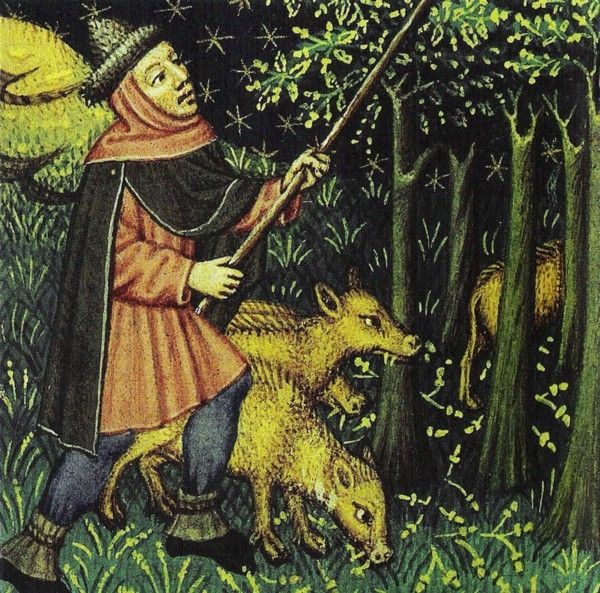
From Foi to Zodiac
On a commission by the Municipal concert hall the Bijloke in Ghent, the Capilla Flamenca chose a number of Ghent Ars nova fragments as a point of departure for the production entitled Foi.
In collaboration with the Ghent dance ensemble Les Ballets C. de la B.,
Foi, directed by Sidi Larbi Cherkaoui, was premiered in March of 2003.
Early polyphony and modern dance were blended into a timeless,
mesmerising performance that toured the world for more than a year.
The works on this Zodiac CD are ordered according to the model of Les Très Riches Heures du Duc de Berry,
the best known Medieval book of hours. The relation between everyday
life and the life of the cosmos is illustrated brilliantly and in great
detail in these world-renowned calendar illuminations produced by the
brothers Van Limburg between 1412 and 1416. The illustrations also
chronicle the vigorous impact of the seasons on the daily life and the
psyche of the Medieval person. The activities of each month, within the
changing procession of the four seasons, are linked to the astrological
signs of the zodiac. As in the pre-Christian tradition, when the zodiac
year began with the spring, our CD begins with this season of promise.
A
rich spectrum of moods, with the seasons (spring, summer, autumn and
winter) as backdrop, resounds in these fourteenth-century songs,
creating a timeless connection of deeply human feelings between the past
and the present.
Dirk Snellings
Artistic director, Capilla Flamenca
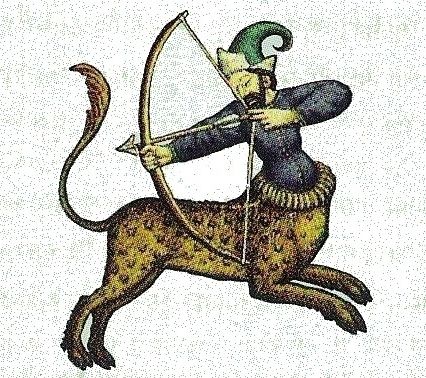
Ars Nova and Ars Subtilior
in the Low Countries and Europe
BRUNO BOUCKAERT
‘Or sont vivant biaus dis faisant
Qui ne s'en vont mie taisant
C'est de Machau le boin Willame
Si fait redolent, si que bausme
Philippes de Vitri et ses freres
Font choses bielles et moult clercs
Et la mettent leur estudie...’
When the Tournai chronicler, poet and abbot Gilles li Muisis wrote the above lines in 1350 in his Méditations,
it was already clear who the two most renowned composers of his time
were. Philippe de Vitry (1291-1361) and Guillaume de Machaut (ca.
1300-1377) are today still considered to be the most important pioneers
of the French Ars nova. The works of these two composers clearly
had a major influence on the fourteenth century musical world in the Low
Countries. Their music was imported from such leading Ars nova centres
as Paris and Avignon. This is hardly surprising, as the general
political and cultural ambitions of the Low Countries were focused on
Paris in this period. However, in recent decades, new evidence has
increasingly suggested that the traffic between these two regions was by
no means one-way only. A great many musicians from the Low Countries
studied at the university in Paris and were members of the Parisian
court chapel and the chapels of the dukes of Anjou, Berry and Burgundy.
Musical fragments preserved in, among other places, Mons, Brussels,
Tournai, Ghent, Cambrai, Leiden, Liège, Tongeren and Utrecht reveal a
highly intensive musical life at the courts, in the cities, the
cathedrals and the collegiate churches in the Low Countries long before
the arrival on the scene of Guillaume Dufay (1397?-1474) and Gilles
Binchois (ca. 1400-1460). These music manuscripts include not only an
extensive but also a rich and varied Ars nova repertoire of both
sacred and secular compositions on Latin and French texts. Many works
were produced in the Low Countries themselves and were then disseminated
throughout Europe. Moreover, a good number of songs on Dutch texts have
also come down to us. This all points to a very specific, identifiable
contribution by the musicians and composers from the Low Countries to
the leading European musical trends of the day.
The so-called ‘Ghent Ars nova
fragments’ take a central place on this CD recording. These two music
manuscripts are preserved in the Ghent Rijksarchief, but came originally
from the archives of the abbey of the Cistercian Sisters of Ter Haeghen
(Ghent, Rijksarchief, Varia D 3360 A) and the archives of Groenenbnel
Abbey (Ghent, Rijksarchief, Fonds Groenenbriel, No. 133). The bifolio
from Groenenbriel Abbey is a collection of mass movements and chansons
added later. The two fragments from Ter Haeghen Abbey are the remains of
a chansonnier, possibly copied in Paris or Dijon and intended for the
court of the Flemish counts in Ghent. Although both manuscripts date
from shortly before or around 1400, they contain mainly works composed
before 1380. It is not surprising that Machaut himself is represented by
two chansons. Most of the compositions can be situated in this same Ars nova tradition. Typical of this tradition are the ballade De ce que foul pensé souvent remaynt by the French composer Pierre des Molins (fl. ca. 1350), the three-voice anonymous virelai Or sus, vous dorméss trop, ma dame joliete and the anonymous Je, Fortune, fay a toulx assavoir, all of which are conceived in a Machaut-derived style.
The
Ghent fragments include many compositions that surprisingly enough
found their way from these Ghent manuscripts to musicians throughout
Europe (including Germany, Austria and Northern Italy). The works
continued to circulate until the early fifteenth century. De Molins'
ballade, for instance, seems to have been very popular. Besides the
Ghent source, it has also survived in eleven other manuscripts,
including a version for keyboard in the Codex Faenza (Faenza, Biblioteca
Comunale, MS 117, ca. 1410-1420), and can also be seen on a tapestry
from Arras (ca. 1420) which portrays a group of musicians. These Ghent
fragments also interestingly include a number of unica: the complete
text of Je, Fortune, fay a toulx assavoir is, for example, found
only here. A number of compositions include vocal material preserved in
no other source, such as the contratenor part of Je, Fortune, fay a toulx assavoir and the triplum of Esperance, ky en mon cuer s'embath.
In
contrast to other musical sources from the same period, there is no
trace in the Ghent fragments of the influence of the Ars subtilior,
which emerged in the final three decades of the fourteenth century.
There are, however, a number of works included by younger (albeit
anonymous) composers who wrote in a simpler, more transparent style,
such as the (four-voice) virelai Je languis d'amere mort and the three-voice rondeau Esperance, ky en mon cuer s'embath.
This
recording also includes a number of single-voice songs. The
fourteenth-century French chanson was in fact linked to the
thirteenth-century solo trouvere literature, both thematically (singing
the praises of fines amours) and formally (the genres). It is no
accident that Machaut was considered the last trouvère. A large number
of single-voice songs by this composer have come down to us, including
the virelai Quant je sui mis au retour. In this way he was
continuing in the footsteps of the Northern-French musician poets of the
so-called trouvère school of Arras. Adam de la Halle (1245/1250-1288?)
was one of the most important exponents of this school. A lesser-known
trouvère from this same tradition was Mahieu de Gant (fl. ca. 1250),
three of whose seven extant works are heard on this recording.
The death of Guillaume de Machaut in 1377 marked the disappearance of one of the undisputed mentors of the French Ars nova.
His dominant position and the fact that many composers of the
post-Machaut generation continued to work in his style did not, however,
spell an end to stylistic innovation. Even (shortly) before Machaut's
death, new compositional tendencies started to manifest themselves,
bursting into full blossom during the last two decades of the fourteenth
century and into the early fifteenth, in the style that came to be
known as the Ars subtilior. This style combined the achievements of the Ars nova with the new elements from the Italian Trecento,
resulting in music characterised by a the utmost in refinement and
complexity, both rhythmically and harmonically as well on the level of
notation.
With its 112 compositions, the Codex Chantilly (Chantilly, Musée Conde, MS 564) is the most important musical source for Ars subtilior
music. One of the best represented composers in this manuscript is the
(probably French) composer Solage, who was active in the late fourteenth
century. The two ballades, Calextone, qui fut dame terrouse and Le basile de sa propre nature and the virelai Joieux de coeur en seumellant estoye are
by this composer. The texts of his compositions indicate that he was
active around 1380 at the French court. In the complex three-voice
ballade Calextone, qui fut dame terrouse, the acrostic Cathelli is a reference to the marriage of certain Cathelinne, probably Catherine, daughter of the French king Charles VI, who married the son of the duke of Berry in 1386. The rondeau Tous par compas suy composés by Baude Cordier (fl. early 15th century), a work inspired by the Italian caccia,
also comes from the Codex Chantilly and can be situated in this same
tradition. This also applies to the two-voice, highly complex ballade Puisque je sui fumeux, plains de fumee
by Johannes Simon de Haspre (Hasprois, fl. 1378-1428). Hasprois came
from the Northern-French city of Arras, and enjoyed a successful career
in the service of the Portuguese court, the French king Charles V and
the papal court in Avignon.
The three-voice virelai Sus un' fontayne en remirant by the Liège-born composer Johannes Ciconia (ca. 1370/1375-1412) is evidence enough that the Ars subtilior
was practised by composers from the Low Countries. This is, to be sure,
the only composition that Ciconia wrote in this style, but it is
considered to be one of the most extreme expressions of the Ars subtilior.
The composition is found in Modena, Biblioteca Estense e Universitaria,
MS M.5.24, which together with the Codex Chantilly is one of the most
important musical sources for the Ars subtilior. Of particular
interest is the fact that Ciconia cites both musically and textually
from three works by the Italian composer and theoretician Philippoctus
de Caserta (fl. ca. 1370), drawing on his En remirant vo douce pourtraiture, En attendant souffrir m'estuet grief payne and De ma doulour ne puis trouver confort.
Ciconia was here continuing the tradition of the ‘citation chanson’, in
which Caserta himself excelled. Ciconia's work may no doubt be seen as a
tribute to Caserta. Sus un' fontayne en remirant may be numbered together with the madrigal Una panthera in compagnia de Marte and the canonic chanson Le ray au soleil qui dret som karmeyne
among Ciconia's early works. He may have written it around 1390,
shortly after his arrival in Padua, where Caserta's work was not
unknown. More recent research, however, suggests that Sus un' fontayne en remiran
was one of the composer's few extant works written before his departure
from Liège for Italy. This would indicate that the Ars subtilior
had quite quickly become known in the Low Countries and that local
composers lost no time in drawing inspiration from the style. At the
same time, there is a close thematic link with the poetry of Machaut's
work, while the somewhat hermetic, spiritual thought-world of the French
troubadours and trouvères, and the Roman de la Rose (with themes such
as the fountain, longing, the lovers), continues to be heard here.
The
contribution of composers from the Low Countries to the Dutch-language
song in the late fourteenth and early fifteenth centuries is
significant: not only do more than forty such compositions survive, but
they were also included in many manuscripts produced outside the Low
Countries. Illustrative in this connection are the two three-voice Dutch
songs by the Bruges composer Thomas Fabri (fl. ca. 1400-1415), a
composer trained in Paris and Bruges by Jean de Noyers, alias Tapissier,
and Johannes Ecghaert respectively. The ballade Ach, Vlaendre and the May-song Die mey so lieflic wol ghebloit
are included in a chansonnier that was compiled by a German (possibly
at the Council of Constance), illustrated by an Italian and is now
preserved in the Cistercian abbey of Heiligenkreuz. Although these works
still show stylistic characteristics of the Ars subtilior, their more
syllabic declamation, use of imitation, homophonic treatment of the
voices and transparent structure all give them a more modern sound,
anticipating the newly-developing Burgundian chanson as practised by the
generation preceding Dufay. The stage had been set for the blossoming
of Franco-Flemish polyphony.
Translation: Stratton Bull
Bruno Bouckaert is postdoctoral researcher for the Flemish Fund for Scientific Research.
